Vintage photos show what it was like to live in New York City 100 years ago
Priyanka Rajput

- New York City was the epicenter of cultural and economic growth 100 years ago.
- In the 1920s, jazz clubs, flapper fashion, and artists like Langston Hughes grew popular.
The only constant in New York City is — and has always been — change. From its early days as a breadbasket colony to the technologically advanced Roaring '20s, each decade has given the city a unique identity.
This is especially true of Roaring '20s New York, a name that referenced the newfound economic prosperity and vibrant arts scene of the 1920s. In this era, New York was the cultural capital, setting new records and rapidly moving toward urbanization. From the East River to the Hudson, new architectural projects and artistic endeavors enveloped the city.
Uptown, in Harlem, jazz rhythms became the city's music. For some residents, lavish soirées with elaborate entertainment, as described in F. Scott Fitzgerald's "The Great Gatsby," symbolized much of this era.
But if you were to take off the Gatsby-colored glasses, it would become evident that this period was defined by more than just indulgent parties. The time was rife with internal turmoil, beginning with the introduction of the 18th Amendment, which prohibited the manufacturing and sale of "intoxicating liquors." There was also widespread anti-immigration hysteria, worker strikes, and racism.
Jonathan Goldman, author of "Modernism Is the Literature of Celebrity," told Business Insider there are some striking similarities between 1920 and our current period — just as we grapple with women's rights and a widening economic divide, so did the people and policymakers in the 1920s.
Citing immigration as another example, he said, "The uproar and fears about the effect of immigration today have echoes of policies enacted in the 1920s."
As we enter an election season in which issues about immigration, women's rights, and democratic freedoms take center stage, photos show how New Yorkers in the 1920s lived through their own versions of these experiences.
The end of World War I and developments in steel and electricity paved the way for an economically advanced New York City in the 1920s.
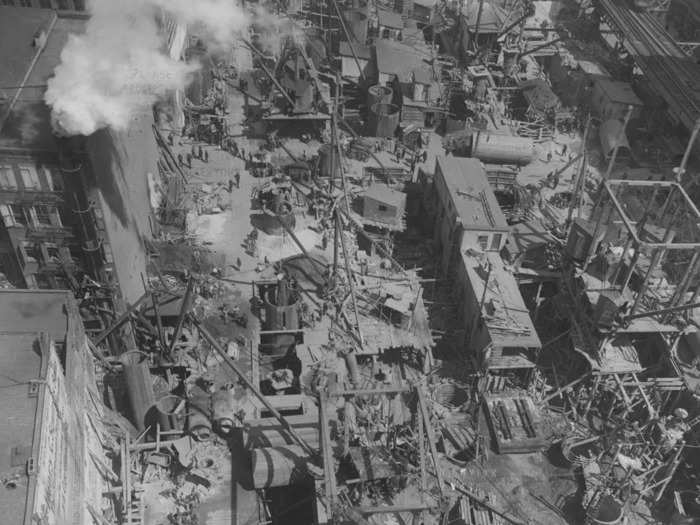
In New York, Wall Street emerged from the war stronger, solidifying its status as a financial superpower and leading to an economic boom that changed the lives of workers across classes.
According to the New York State Library, the middle class could now afford "what were once out-of-reach luxury items" including cars and the newest fashions.
Some of today's most iconic skyscrapers were built in this era.
In "A History of New York in 27 Buildings," author Sam Roberts writes that in the 1920s, almost every real estate investor wanted to join the "tallest building club." Over 50 towers reaching 35 stories or more were under construction or had already been completed, and real estate investors were eager to add more.
Several plans, including those for the Empire State Building and the Chrysler Building, were announced in the '20s. While the two structures were only completed by the 1930s, they came to symbolize the city's wealth and power.
The Woolworth Building, pictured, was completed in 1913, but it was the tallest building in the world throughout the 1920s until 1930 and the completion of 40 Wall Street, formerly known as the Bank of Manhattan Company Building and now the Trump Building.
Alistair MacDonald, a British architect, shared his impressions of skyscrapers in New York in a 1930 CBS radio interview, later published in The New York Times, stating, "I shall never forget my first sight of the skyline. I involuntarily remarked, 'the new Babylon' when I saw those proud buildings rearing their heads above the clouds."
But while the skyscrapers were celebrated, the workers who helped build them toiled for long hours in dangerous conditions.
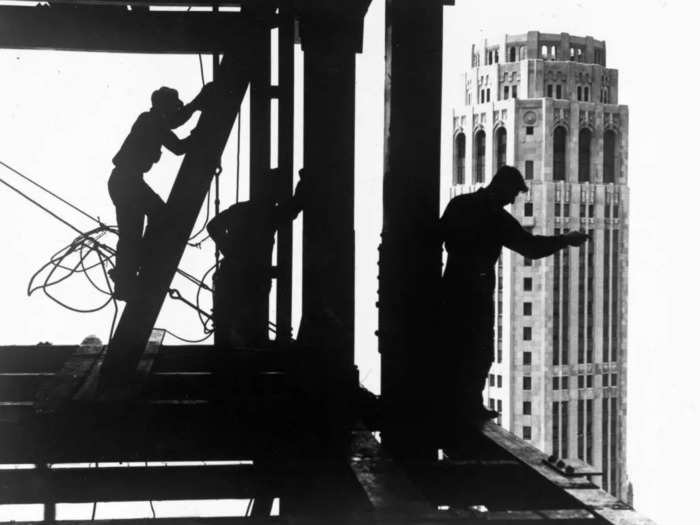
The Smithsonian documentary "America in Color: The 1920s" shows a man climbing a steel beam high above the city like a monkey. According to the documentary, workers spent eight-hour shifts in the clouds without harnesses or bathroom breaks.
In 1923, 177 people died while working in construction, the highest number across all industries at the time, according to a 1925 report submitted to the Bureau of Labor Statistics and retrieved via the Library of Congress. In addition, 1,646 workers were permanently disabled, and 8,407 were temporarily disabled.
Hospitals had been serving New Yorkers for two centuries, but Lillian Wald, the founder of the Henry Street Settlement, helped expand the visiting nurse program.
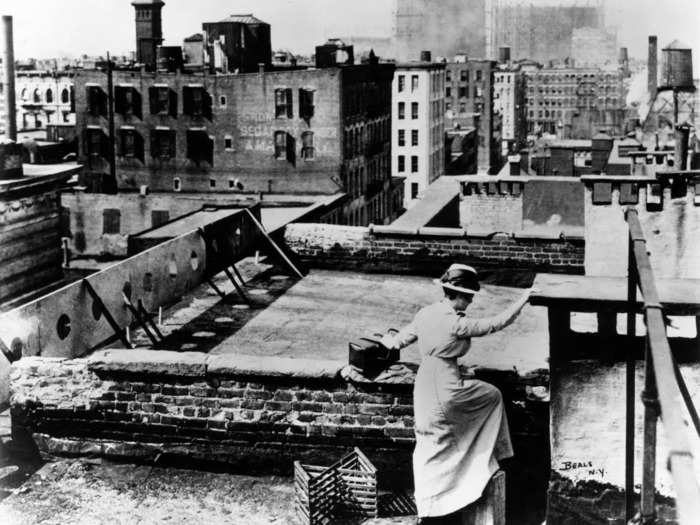
The Department of Health City of New York's annual health report from 1920 states that at the beginning of this year, the health department grappled with many challenges, from scarcity of coal and limited housing for an increasing population to infectious diseases and postwar restrictions. These factors overwhelmed the already overburdened hospitals around the city.
This was also a time when the city dealt with a tuberculosis outbreak, which, per the Museum of the City of New York, was a leading cause of death in New York City in the late 19th century and early 20th century. But authorities failed to take it seriously, forcing nurses to step up and help people who were impacted. One of the programs that emerged from this was Lillian Wald's visiting nurse program.
Starting in the 1890s, the Henry Street organization provided health and visiting-nurse services to people living in Manhattan's Lower East Side, a district largely occupied by immigrants. Eventually, the group worked in other communities across Manhattan.
In "Greater Gotham: A History of New York City from 1898 to 1919," Mike Wallace wrote that the number of nurses in the healthcare system increased from 27 in 1906 to 47 in 1910 to 100 in 1917. That year, nurses made 250,000 home visits and reached more patients than those treated at three of New York's hospitals, achieving a significantly better recovery rate from diseases like pneumonia.
The automotive industry enjoyed rapid success and cars filled New York City's streets.
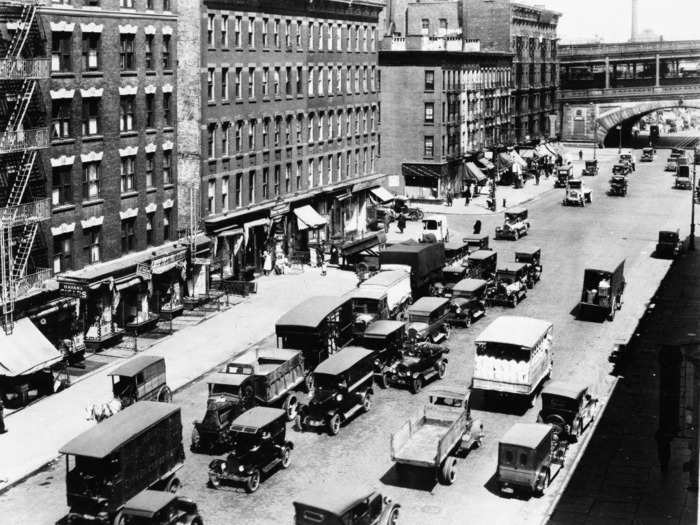
One game-changing development in car factories was the Ford factory's first moving assembly line. It meant the Ford Model T could be assembled in 93 minutes — it had previously taken 12 hours — leading to a 20% increase in car ownership, according to the Smithsonian.
The Ford Model T, which sold for $260 in 1924, became popular among Americans. Low costs meant more people in society could afford a car, which resulted in an increase in the number of vehicles on the streets. Now, the city had a new problem: Over a half million new vehicles blocked the roads of New York, while city officials struggled to put together plans for new roadworks or highways, according to the Living City Archive.
Flappers redefined being a woman in 1920s New York and became one of the era's most enduring symbols.
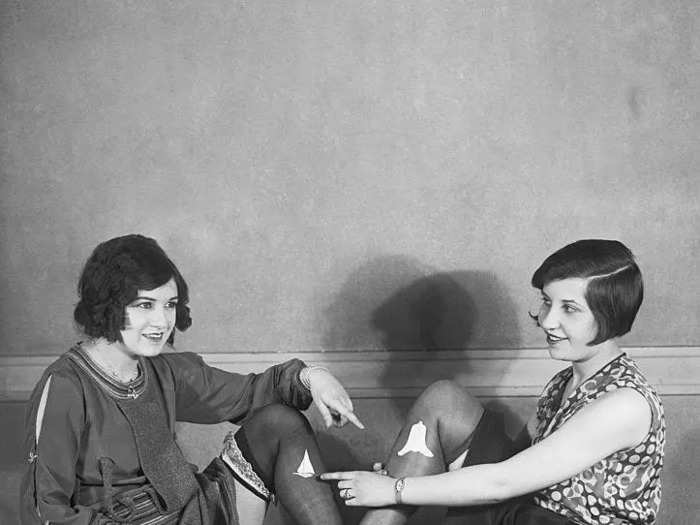
In many ways, this was a defining decade for women's rights and liberation, spurred partly by the increasing demands of an industrial economy and the women's political movement. Now more than ever before, women were part of the labor force in large numbers: By the end of the decade, 25% of all women and over 50% of single women were employed in the workforce, according to History.com.
While the term flapper was used to describe young women with bobbed hair who drank, smoked, and were sexually outgoing, only a small section of women identified with this culture. However, many did adopt style trends associated with flappers, such as the classic loose fabrics, higher hemlines, fringe and feather details, and fitted sleeves that allowed for ease of movement. In essence, clothing became more practical and fun.
With the passing of the 19th Amendment, white women voted for the first time.
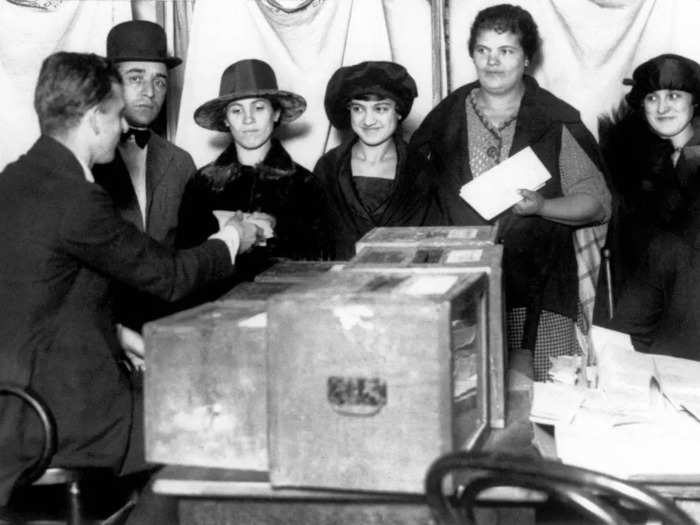
Women's rights activists and the suffragettes fought a long, hard battle to expand voting rights. In 1917, New York became one of the first states to grant women the right to vote, setting an example for the rest of the country. By 1919, the 19th Amendment was passed and it was ratified the following year.
However, this was exclusive to white women. Black women of New York, like those in the rest of the country, had to wait until the Voting Rights Act of 1965 before they could cast their ballots.
Women also took on Wall Street.
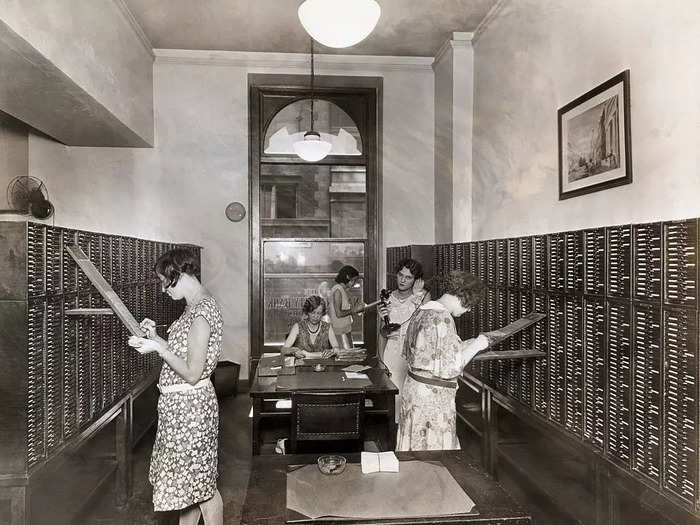
"Clerking in nineteenth-century Wall Street countinghouses had been an all-male affair," author and historian Mike Wallace wrote in his book, "Greater Gotham: A History of New York City from 1898 To 1919." And yet, a new twist came at the turn of the 20th century.
"The twentieth brought a tremendous expansion of white-collar office work, whose enormous costs managers kept down by hiring the public-school-trained daughters of the city's Anglo, German, and Irish working classes," he wrote.
It meant that, by the start of the 1920s, offices were full of female employees and nearly a quarter of working women in New York had clerical jobs, Wallace said.
Policewomen in the '20s wore skirts as part of their official uniform.
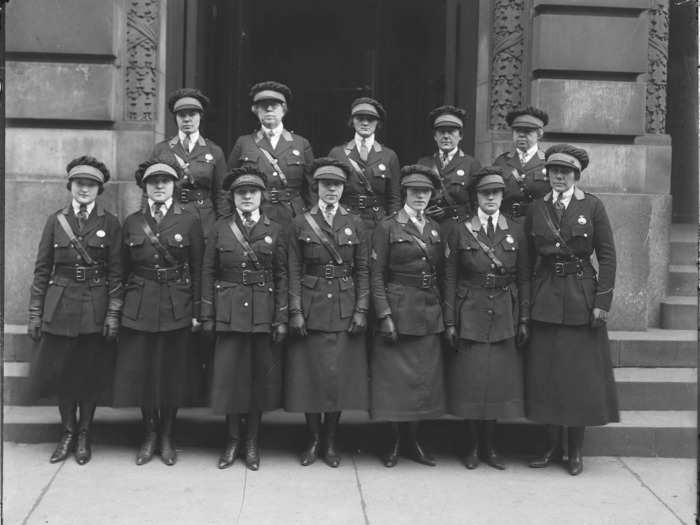
The New York City Department of Records archives show that women were first hired as police matrons in 1854 to ensure the well-being of women and children who were taken into police custody. In 1900, a select few were allowed to work with detectives, but the full scope of policewomen's role did not expand until the end of World War I.
In 1920, a short-lived Women's Police Precinct was formed, and later, the Women's Bureau.
The Harlem Renaissance, spearheaded by writers Langston Hughes, Claude McKay, and others, took shape at a time of massive social differences.
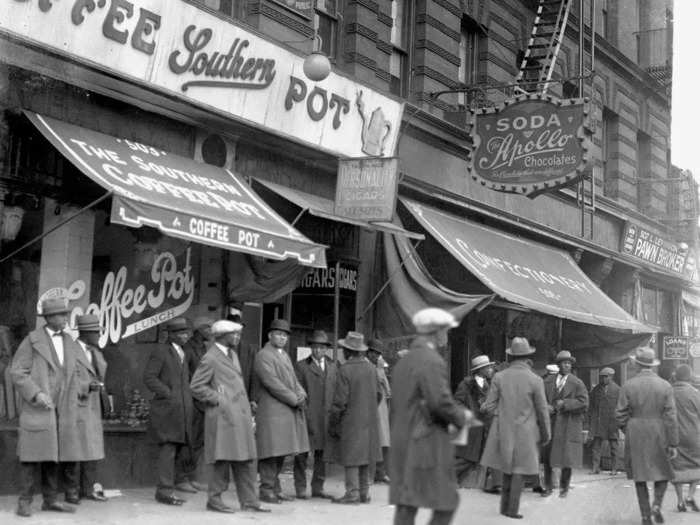
Labor shortages in the North, especially in cities such as New York and Chicago, meant recruiters pursued people in the South. A new avenue of work opportunities coupled with Black Americans' growing frustrations with inhumane working conditions in the Jim Crow South led to a mass migration movement within the country, per the National Museum of African American History and Culture.
Author Isabel Wilkerson offers insight into the lives of Black Americans living in the South in her Pulitzer Prize-winning book, "The Warmth of Other Suns: The Epic Story of America's Great Migration," writing, "People did not cross the turnstiles of customs at Ellis Island. They were already citizens. But where they came from, they were not treated as such."
Black Americans arriving in cities like New York came in the hope of living better and more equitable lives. While their lives were far from equitable, they adjusted to the city culture by documenting their experiences and creating several new art forms, giving rise to the Harlem Renaissance.
The Great Migration drew to Harlem some of the greatest minds and brightest talents of the day, from writers Langston Hughes and Zora Neale Hurston to actor and singer Paul Robeson, activist Marcus Garvey, and visual artist Aaron Douglas.
But the ultimate highlight emanating from the Harlem Renaissance was jazz.
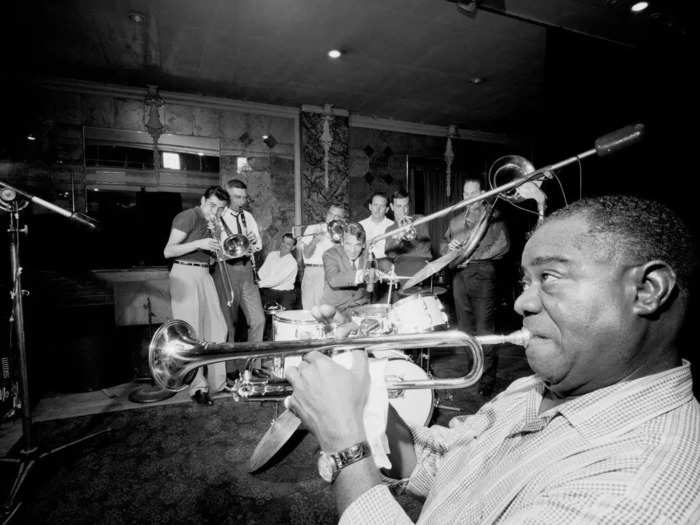
Harlem's jazz slowly became popular across the city, eventually becoming the choice of entertainment at almost every illegal speakeasy in town. As well as pulling audiences from within the community, it also enthralled white outsiders, per History.com.
Cultural stalwarts such as Louis Armstrong, Duke Ellington, Bessie Smith, and Fats Waller became popular during this decade.
Jazz became part of the city's vibrant nightlife.
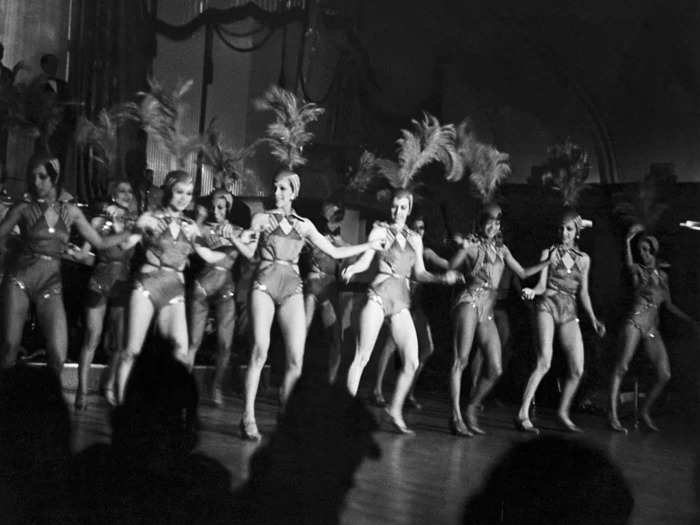
Several wealthy, mostly white Americans frequented Harlem haunts to experience the glittering nightlife. However, some people expressed the desire to experience Black culture without socializing with Black Americans, leading to the opening of several new, white-only entertainment establishments. The most successful of these, as reported by History.com, was the Cotton Club.
The thriving arts scene led to the popularity of literary hot spots, such as the Algonquin Hotel, which hosted several famous figures.
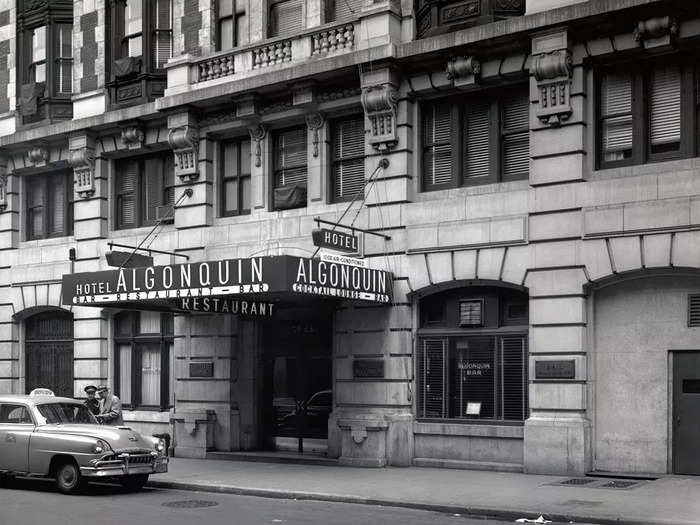
The Algonquin Hotel was home to writers such as Dorothy Parker, Edna Ferber, Alexander Woollcott, and many more. The New York Times reported that artists frequenting the spot were called "Members of the Round Table" and were famous for their "lacerating wit."
New Yorkers also loved watching movies in the theater.
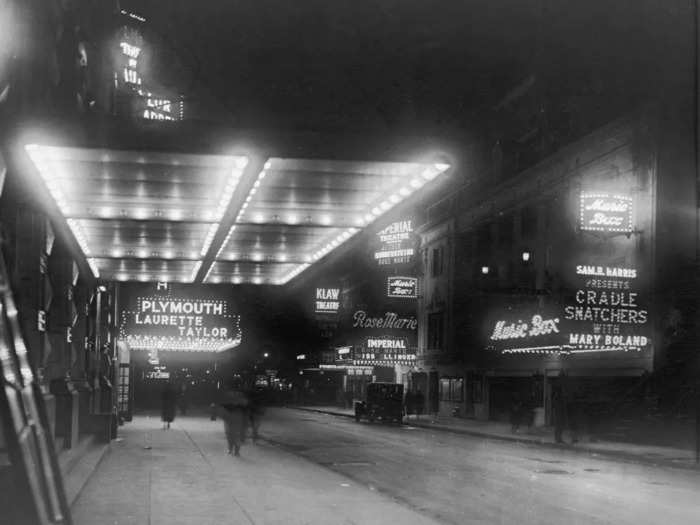
A rise in income levels meant that going to the theater became a weekly indulgence for many, according to the Almanack of New York City.
This decade also saw the introduction of the 18th Amendment, also known as Prohibition.
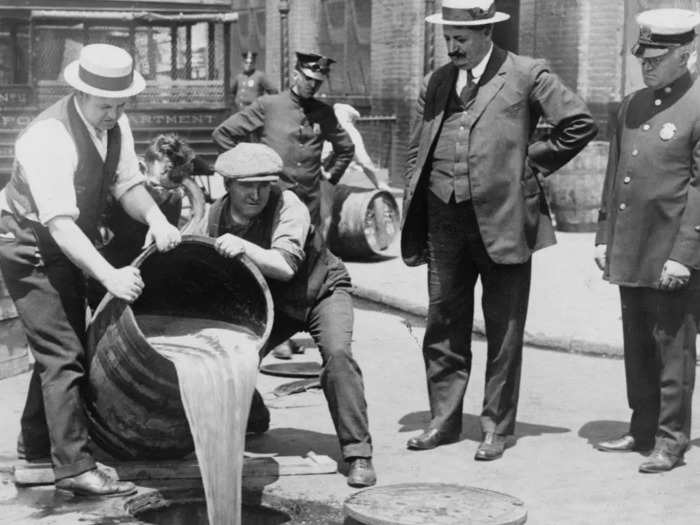
With the Volstead Act enforced on January 17, 1920, every tavern, bar, and saloon in the country was shut down.
But conservative factions trying to control people's drinking habits had somewhat the opposite effect on the wider society.
Thousands of speakeasies sprung up around the city, leading to unintended consequences.
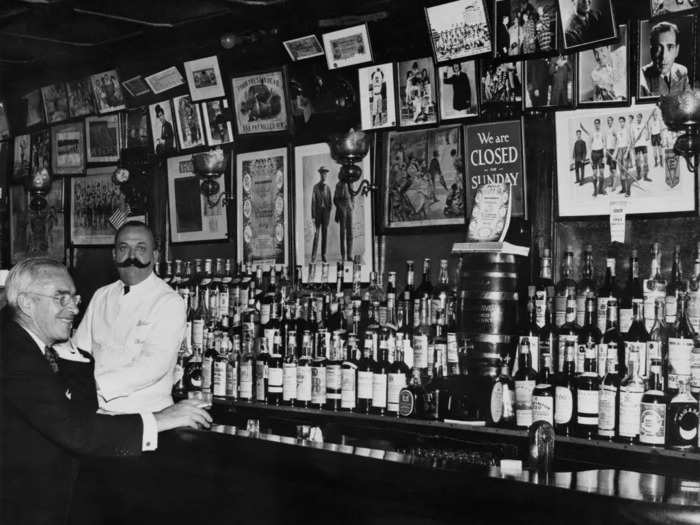
A ban on the sale and manufacture of alcohol did not stop people from consuming it.
As shown in F. Scott Fitzgerald's novel "The Great Gatsby," the ban on alcohol helped create an alternate market for these in-demand drinks. This led to the rise of a new class of wealthy Americans like Jay Gatsby, the titular character, who became rich overnight from the illegal sale of alcohol.
Immigrants arrived in huge numbers from across the world, sparking widespread fears of job competition.
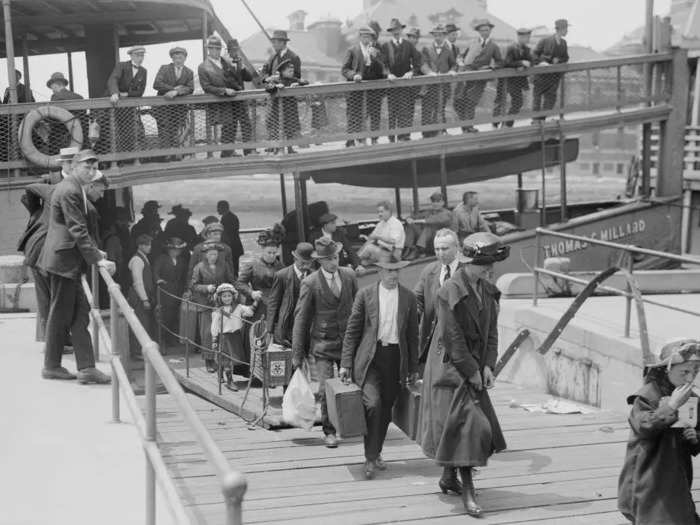
As New York gained global recognition for its booming financial market, people from all over the world flocked to its doorstep. In 1900, the newly consolidated city was home to 3,437,202 people, according to New York state Census data. In 1920, that number grew to 5,620,048; of this total, well over 40% were first-or second-generation immigrants.
People traveled from Europe, the Middle and Far East, the Caribbean, and Central/South America. Within the US, Black Americans from the South and white Americans from rural areas also moved to the city.
Families arrived at Ellis Island en masse, thereby "swelling existing enclaves or launching new ones, some pocket-sized but many vast enough to allow them to bear the mark of a particular ethnic culture," according to "The Encyclopedia of New York City: Second Edition." By 1920, New York City was a true melting pot of cultures.
However, not everyone was happy about the newcomers.
"In the 1920s, New York City was very much a place where white supremacy and anti-immigration attitudes were flourishing," Jonathan Goldman, author of "Modernism Is the Literature of Celebrity," told Business Insider.
These attitudes gave way to laws such as the Immigration Acts of 1921 and 1924, which barred Asians entirely and established stringent quotas for other groups, particularly Southern and Eastern Europeans.
Like the rest of America, baseball was popular among immigrant children. However, limited resources and smaller spaces meant they had to re-think the sport, giving rise to stickball.
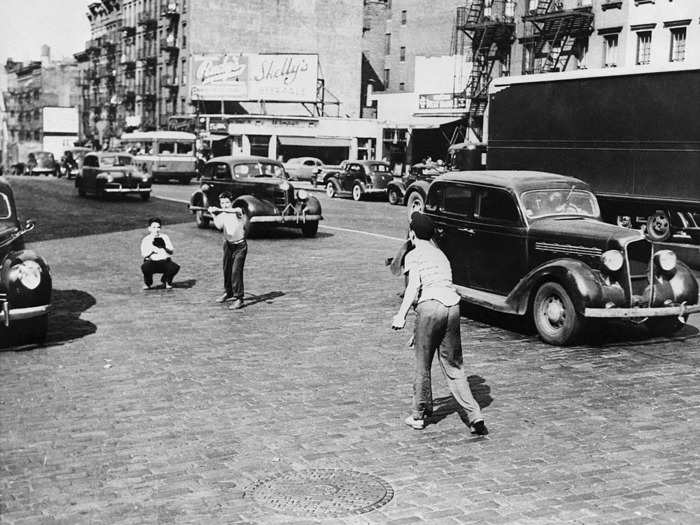
Learning baseball was considered one of the rituals of becoming an American. However, since few fields existed in an increasingly dense urban neighborhood, children created stickball for the streets, according to "The Encyclopedia of New York City: Second Edition."
For the bases, they used items such as fire hydrants, sewer covers, and lampposts. The only items they had to bring along were a sawed-off broom or a mop handle in place of a bat and a pink rubber ball.
A bomb attack on Wall Street claimed the lives of 38 people and, to date, remains unsolved.
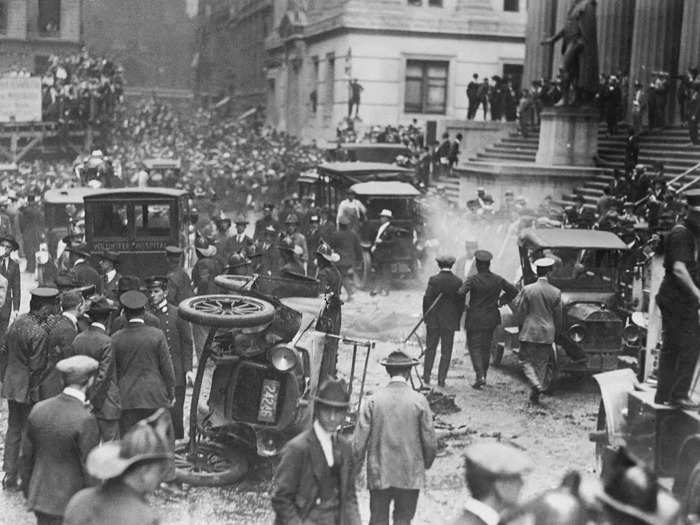
At noon on September 16, 1920, a bomb that was delivered via "dynamite and horse-drawn carriage" detonated outside the offices of J.P Morgan at Wall and Broad Street, CBS news reported. Thirty-eight people died, and 143 others were gravely injured.
Beverly Gage, author of "The Day Wall Street Exploded: A Story of America in Its First Age of Terror," described the attack as one of "the worst terrorist attacks in US history until the Oklahoma City bombing."
The decade ended on a low. A series of events sparked by the sudden crash in the stock market silenced the Roaring '20s, leading to the Great Depression.
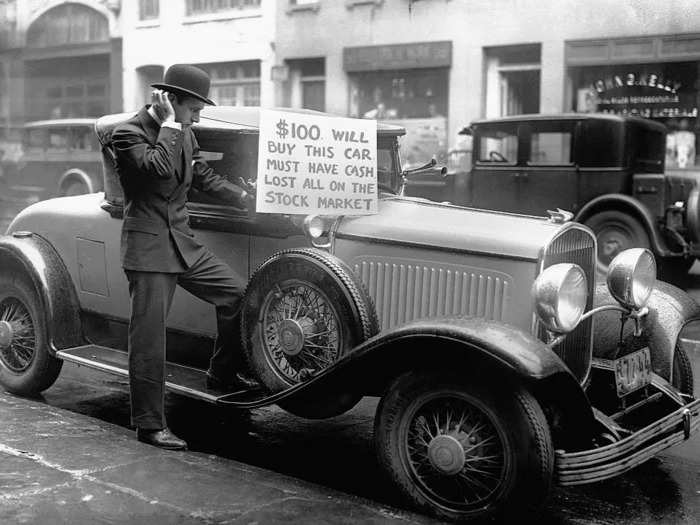
The high of capitalism and materialism crumbled once the stock market crashed at the turn of the decade.
Popular Right Now
Popular Keywords
Advertisement